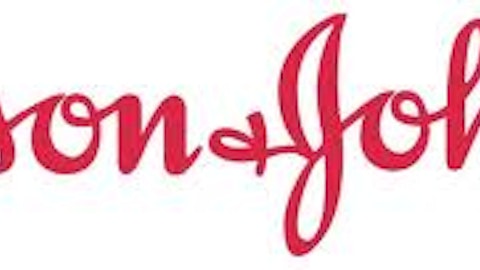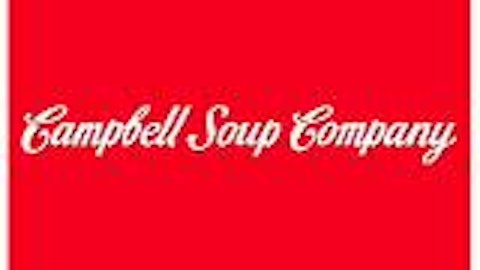A few days ago, I started searching for the best Safety Stocks. These are stocks that I feel will hold up well in the face of a bad economy or recession. They make products that people need, have stable customer bases, have strong brands, and are solid performers in almost any environment. They are stocks that an investment advisor was never fired for recommending.
You can expect these stocks to deliver total returns of 5% – 10% per year or more (if you find the right entry point) with minimal downside risk.
My list includes General Mills, Inc. (NYSE:GIS), Johnson & Johnson (NYSE:JNJ), Sysco Corporation (NYSE:SYY), and Kimberly Clark Corp (NYSE:KMB).

General Mills is a manufacturer and marketer of branded consumer foods sold in retail stores. The company’s portfolio of brands includes Wheaties, Cheerios, Yoplait, Betty Crocker, Totinos, Green Giant, Lucky Charms, and many others. On the positive side, General Mills has a strong diversified portfolio of products, is poised for solid international growth, and has consistently delivered.
On the negative side, General Mills is having difficulty passing costs onto consumers, is likely seeing return on investment decline for in-store marketing and merchandising, and recently issued a conservative outlook for FY13 and beyond. General Mills faces the challenge of maintaining strong brands in an environment where marketing endeavors with strong returns are difficult to find. Overall, General Mills is a solid investment as long as the price is right.
Johnson & Johnson (NYSE:JNJ)
Johnson & Johnson manufactures a wide range of products in the health care field. A few of its well-known brands include Aveeno, Clean & Clear, Neutregena, Lubriderm, Listerine, Reach, Stayfree, Tylenol, Sudafed, Zyrtec, Motrin, Pepcid AC, and Risperdal. As you can see, this is a very diversified healthcare company.
On one hand, owning J&J is like owning several other small companies. It appears as though this company is well-positioned to benefit from a strong pipeline of new and recently launched products. After all, sales of immunology drugs are catalyzing growth for Johnson & Johnson.
Johnson & Johnson is trading in line with the average multiplier of medical technology stocks, which given its stability suggests that it is a better value than other stocks in the sector. On the other hand, the company reported that it was shopping for customers for its Ortho Clinical Diagnostics business so that it could redeploy capital. Additionally, the company faces increased competition from generic manufacturers and healthcare spending in Europe has slowed. All factors considered, Johnson & Johnson is still a solid investment at the right price.
Sysco Corporation (NYSE:SYY)
Sysco is the largest foodservice marketing and distribution company in the United States. This company distributes more than 400,000 products to restaurants, schools, hotels, and other outlets. On the positive side, Sysco is a very stable company, is continuing to improve its operating efficiency by investing in infrastructure projects, is targeting and acquiring companies to increase its market share, and will continue to pay a consistent dividend.
On the other hand, Sysco needs to maintain its gross margins, faces tough competition (there are thousands of foodservice distribution companies), and its business is dependent on high volume. That said, Sysco is well-positioned to increase its share of the $200 billion-plus food service market. Overall, recent acquisitions should catalyze moderate earnings and dividend growth of 7% – 8%.
Kimberly Clark Corp (NYSE:KMB)
Kimberly-Clark is a leader in several major household product categories such as diapers, facial tissues, and paper towels. This company has a portfolio of leading brands that includes Depends, Huggies, Cottonelle, Kleenex, Kotex, and Scott. On the positive, Kimberly-Clark is expected to earn at least $5.50 in FY13 and $6.00 in FY14, is cutting costs and improving its gross margins, and is well-positioned to benefit from exposure to emerging markets as incomes rise. Over the long term, this company will continue to return cash to shareholders through dividend increases and share buybacks.
On the other hand, Kimberly-Clark is having problems in Europe where it may end up having to dial it down a notch. And like many other companies, Kimberly-Clark faces a significant threat from private label brands.
All in all, Kimberly-Clark is a very well-managed company that is investing in new products and businesses, maintaining gross margins of existing products and businesses, focusing on sustainable profitable growth, and should continue to deliver moderate earnings and dividend growth of 7% – 8% as well.
3 Critical Considerations
1). Price. These four companies are all great companies. There is no doubt about that. But price matters – a lot. That said, I would not purchase any of these companies at an earnings multiple of more than 15. And I would shoot for a multiple of 12 or less for Johnson & Johnson.
2). Dividend Yield. All of these companies currently have dividend yields of around 3%. I would like to see that closer to 4%.
3). Market and Sector Performance. The majority of these companies will more or less perform in line with the market. Except they will trade within a tighter range. That is why finding a good entry price matters.
My Foolish Take
All of these companies are very solid companies. You cannot expect any of these companies to deliver huge returns. But you can expect them to provide reasonable returns with minimal downside risk. Finding an attractive entry point is critical. I would wait for a significant market pullback before considering any of these companies because almost all of these companies are trading near their 52-week highs.
The article A Portfolio of Safety Stocks originally appeared on Fool.com and is written by Ryan Peckyno.
Copyright © 1995 – 2013 The Motley Fool, LLC. All rights reserved. The Motley Fool has a disclosure policy.





